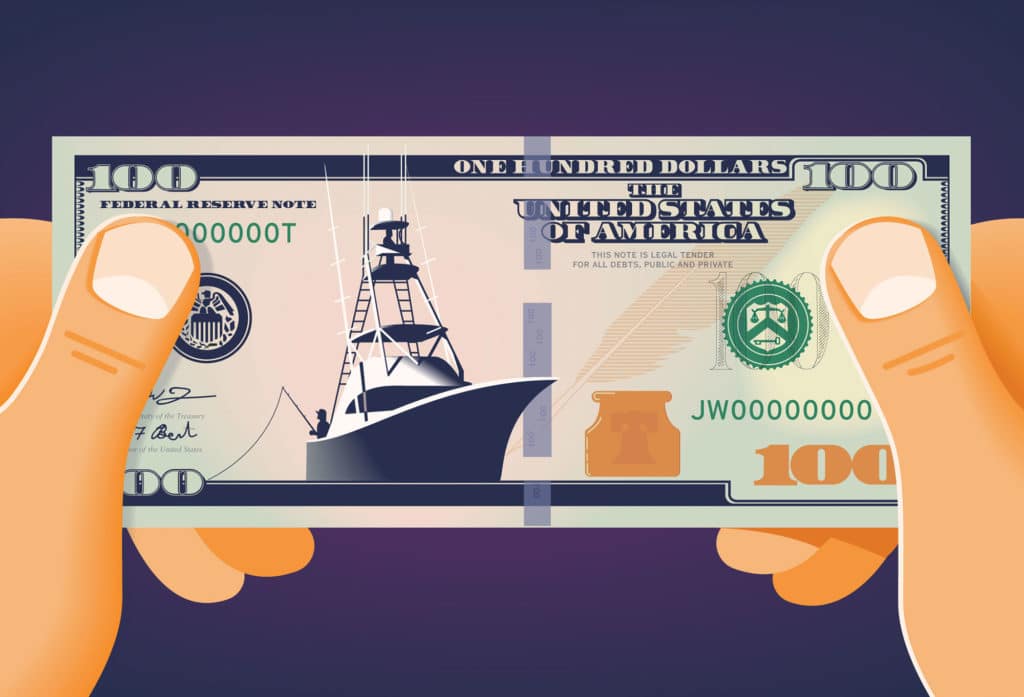
The old saying goes, “Money talks and BS walks.” Well, the truth is a lot closer to yes and no when it comes to fisheries issues. As it applies to the money aspects, it should be fairly black and white. The “socio” impacts are a little murkier, unless you are simply looking at participation. Then for recreational fisheries, it is a slam dunk.
A recent report published by the American Sportfishing Association shows just how big the economic impact of sport fishing is and how many participants enjoy the benefits. The numbers are astonishing.
Nationwide the annual number of anglers is about 50.1 million. If those who might not purchase a license every year are counted, that number expands to 74 million, more than 1 in every 6 US citizens. Using the same logic, there are as many as 16 million saltwater anglers. They spend $14.4 billion in direct expenditures, which amounts to $36 billion in output. These expenditures promote 231,422 jobs and $4.6 billion in federal, state and local taxes.
When these studies come out, I am always interested to see what states and species lead the pack. It is usually the same state, and it makes sense. Florida has the most coastline, and thus the most potential for fishing activity. But I am usually surprised to see which species generate the most economic activity. It is not always the glamorous fish. Red drum (redfish) took the lead with $1.9 billion, and flatfish, which might be unfair as a category, was next with $1.8 billion. Striped bass and seatrout were not far behind, with about $1.4 billion in expenditures. We are talking some real money here.
Beyond all this money spent directly, anglers are happy to contribute to make sure that the resources they seek are sustainably managed for today and tomorrow. US anglers have been contributing to the Federal Aid in Sport Fish Restoration Act, which has placed an excise tax on all fishing gear since 1950, and expanded to add boat fuel in 1985. Currently, this generates $650 million annually. Add to that $752 million in license sales and $283 million in donations, and it is obvious anglers put money where their mouths are.
Read Next: Economics of Recreational Fishing
So, why all the discussion on the economics of sport fishing? Because this activity is a real part of the gross domestic product (GDP) of the US, and because sport fishing contributes a lot to the conservation, sustainability and future of the resources that support this community. It constantly makes me wonder about the management philosophy for our fisheries in general.
First, let me emphatically state that I do not believe that we should end all commercial fishing. I have suggested that managers restrict commercial catch methods that are detrimental to benthic habitat and have high levels of bycatch, but that is a windmill to tilt another day. I do believe that managers should take into consideration the concept of highest and best use when allocating resources that are important to the recreational fishing community. Managers should be moving away from the historic use of maximum sustainable yield (MSY) for resources and moving to optimum yield (OY). What is the real difference between these two management regimes?
MSY focuses on the greatest number of fish that can be extracted while maintaining numbers above a target population. OY is lot closer to ecosystem management, while MSY is “reduced by relevant economic, social or ecological factors.” The Magnuson Stevens Fishery Conservation and Management Act (MSA) under National Standard 5 disallows the allocation of fish solely on economic grounds. However, it does allow decisions that include social and environmental factors. It would seem by using all the economic benefits to the country and the number of on-water anglers that recreational users should have a far greater percentage of the allocation for some species. For a few species, one might wonder why there is any allocation to commercial fisheries at all. At the same time, recreational anglers need to recognize that, as a major user group, we need to accept that we have an impact and we need to support methods to control our catch. In the final analysis, a dead fish is still a dead fish removed from the biomass.
I believe that, currently, recreational users take about 3 percent of the total catch of fish resources. With that, we generate many times the economic impact of comparable resources caught commercially. If that percentage was just doubled to 6 percent, it would have a real beneficial impact in terms of GDP and jobs. Isn’t that the highest and best use of resources that continue to be limited? The numbers prove that, and we need to continue to push for it.









